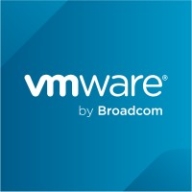

OpenText Cloud Service Automation and VMware Tanzu Platform are competing in cloud service management and automation. VMware Tanzu Platform is considered superior due to its robust feature set, deemed to justify its investment.
Features: OpenText Cloud Service Automation provides strong integration capabilities, efficient resource management, and automation features that streamline cloud operations. VMware Tanzu Platform distinguishes itself with advanced Kubernetes compatibility, scalability, and container management, making it more appealing for enterprises seeking comprehensive cloud-native solutions.
Room for Improvement: OpenText Cloud Service Automation could enhance its Kubernetes integration, expand its scalability features, and improve its user interface for a more comprehensive experience. VMware Tanzu Platform could benefit from simplifying its deployment process, reducing its initial configuration requirement, and offering more cost-effective pricing models for smaller enterprises.
Ease of Deployment and Customer Service: OpenText Cloud Service Automation offers a flexible deployment model with strong customer support, ensuring smooth integration. VMware Tanzu Platform's deployment is designed for complex environments but may require more configuration. Its robust customer service enhances its deployment, suitable for organizations investing in tailored support.
Pricing and ROI: OpenText Cloud Service Automation is noted for its competitive pricing, providing value through low initial costs and favorable ROI. VMware Tanzu Platform, with higher initial costs, offers extensive functionality and long-term benefits that justify the investment, promising higher returns for organizations aiming for advanced cloud-native infrastructure.
| Product | Market Share (%) |
|---|---|
| VMware Tanzu Platform | 1.1% |
| OpenText Cloud Service Automation | 0.7% |
| Other | 98.2% |


| Company Size | Count |
|---|---|
| Small Business | 1 |
| Large Enterprise | 6 |
| Company Size | Count |
|---|---|
| Small Business | 10 |
| Midsize Enterprise | 3 |
| Large Enterprise | 10 |
OpenText Cloud Service Automation provides open, heterogeneous, extensible enterprise-grade cloud service lifecycle management to design and orchestrate full stack services. CSA embraces existing automation assets with an enhanced orchestration engine, which provides IT with an informed, transparent delivery of secure compliant services for the hybrid cloud.
VMware Tanzu Platform is designed for cloud-native development and management of Kubernetes, CI/CD processes, microservices, and containerized workloads. It supports deployments both on cloud and on-premises, providing centralized management via Mission Control.
VMware Tanzu Platform offers seamless integration with vSphere, ESX, and vSAN, supporting centralized cluster management and lifecycle management. The platform provides a GUI for monitoring CI/CD pipelines and network policies, enhancing multi-tenancy and Day 2 operations. Users can easily manage Kubernetes clusters, monitor applications, and integrate with tools such as GitHub, GitLab, Cloud Foundry, and Azure. It ensures compliance and security for service providers, financial institutions, and businesses.
What are the key features of VMware Tanzu Platform?
What benefits and ROI should users look for in VMware Tanzu Platform reviews?
Industries such as financial institutions, service providers, and businesses requiring rigorous compliance and security deploy VMware Tanzu Platform. These entities benefit from centralized management, streamlined DevOps processes, and integrated tools, enhancing their capabilities in cloud-native developments and containerized workloads.
We monitor all Cloud Management reviews to prevent fraudulent reviews and keep review quality high. We do not post reviews by company employees or direct competitors. We validate each review for authenticity via cross-reference with LinkedIn, and personal follow-up with the reviewer when necessary.